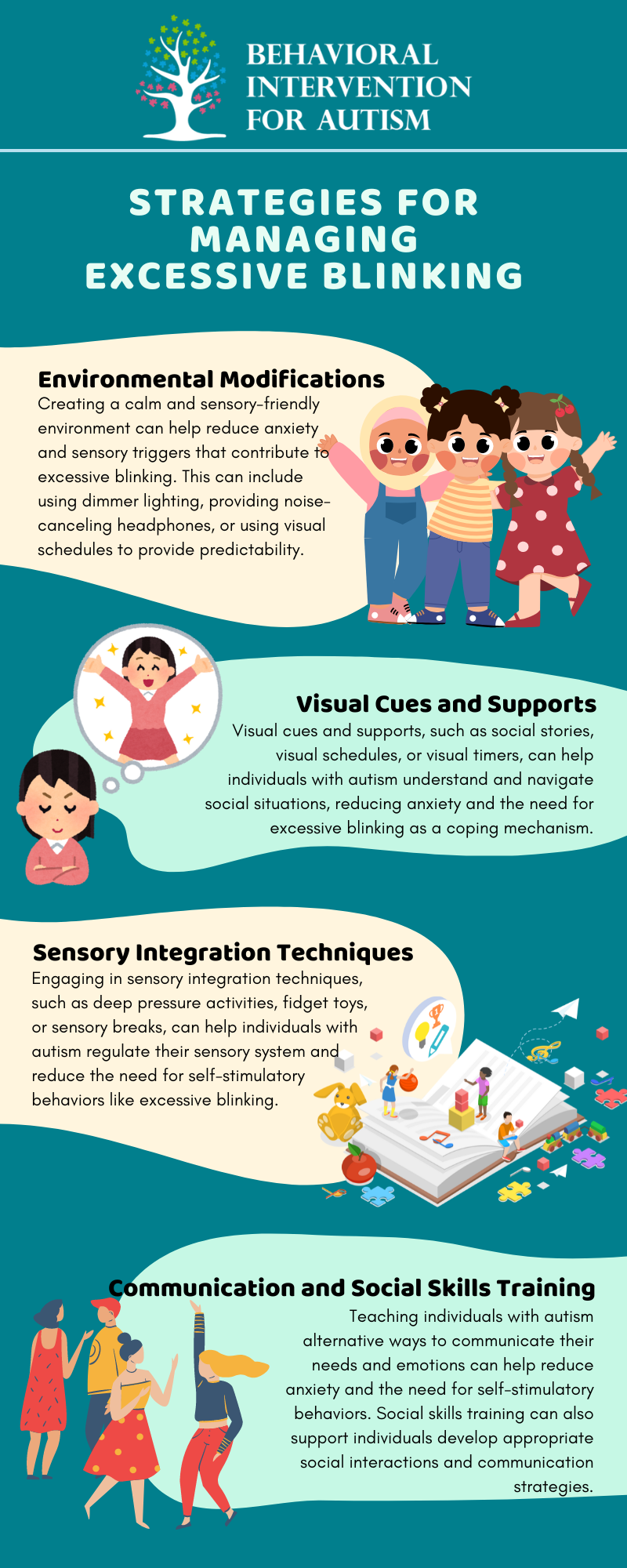
Table of Contents
Excessive blinking in individuals with autism has been a topic of interest in recent research. Understanding the link between blinking and autism can provide insights into how individuals with autism process visual information and engage with their surroundings.
According to researchers, there is a correlation between blinking patterns and engagement levels in children, including those with autism. Warren Jones, a pediatrician at the Emory University School of Medicine, conducted studies that found toddlers with autism inhibited their blinking during moments that engaged them while watching recorded scenes.
This indicates that blinking behavior can be a potential indicator of autism in children. But is there really a connection? Let’s find out!
Research Findings on Blinking Patterns
Studies have revealed that children with Autism Spectrum Disorders (ASD) demonstrate different responses to stimuli compared to typically developing children, as evidenced by variations in blinking patterns while watching videos.
A study conducted with 93 two-year-old children, some typically developing and some with ASD, showed that toddlers with autism were more likely to inhibit their blinking when looking at physical objects and objects in motion.
In contrast, typically developing children inhibited blinking during emotional moments and when observing faces on the screen. These differences in blinking behavior provide insights into how children with autism perceive visual stimuli.
Blinking as an Indicator of Engagement
Blinking patterns can provide insight into how autistic individuals process information and engage with their environment.
Blinking interruption, known as “blink inhibition,” can indicate engagement and the importance of the matter being observed. Research has shown significant differences in when and why toddlers with and without autism blink their eyes.
These differences in blinking behavior highlight the unique ways in which individuals with autism perceive and interact with visual stimuli.
Factors Influencing Excessive Blinking
Several factors can contribute to excessive blinking behavior in autistic individuals. Understanding these factors is essential for parents, caregivers, and educators to effectively support and manage them.
There are 3 key factors that can influence excessive blinking in individuals on the autism spectrum. These are as follows:
Sensory Sensitivities
Children with autism often experience sensory sensitivities, where their sensory systems may be overly sensitive or understimulated. This can result in heightened responses to certain stimuli, including visual stimuli, as well as a couple of repetitive behaviors.
Excessive blinking may be a way for individuals with autism to cope with sensory overload or to self-regulate their sensory experiences. By blinking, they may temporarily block out or reduce the visual input that is overwhelming to them.
Parents and caregivers should be able to identify specific triggers that may contribute to sensory sensitivities and excessive blinking in individuals with autism. By doing so, they can possibly minimize the occurrence of excessive blinking and support the individual’s comfort and well-being.
Anxiety
Anxiety is commonly experienced by individuals with autism, and it can manifest in various ways, including excessive blinking.
Anxiety can stem from challenges with social interactions, communication difficulties, or difficulties understanding and adapting to changes in routine. Excessive blinking may serve as a self-soothing behavior or a way to release tension and cope with anxiety.
To help individuals with autism manage anxiety-related excessive blinking, it is important to create a supportive and predictable environment. This can include providing clear communication, establishing consistent routines, and offering strategies for relaxation and stress reduction.
Additionally, teaching individuals with autism coping techniques, such as deep breathing or mindfulness exercises, can help alleviate anxiety and reduce excessive blinking.
Allergies and Medical Issues
In some cases, excessive blinking in individuals with autism may be related to allergies or other underlying medical issues. Allergies can cause eye irritation and discomfort, leading to increased blinking as a natural response. Other medical conditions, such as Tourette syndrome or nutritional deficiencies, can also contribute to excessive blinking.
Hence, parents and caregivers should monitor and address any potential medical issues that may be causing or exacerbating excessive blinking in individuals with autism.
Consulting with a healthcare professional can help identify and manage these underlying conditions, ensuring the overall well-being of the individual.
How to Manage Excessive Blinking
Once the triggers for excessive blinking have been identified, various strategies can be implemented to manage this behavior effectively.
Here are some pretty effective strategies:
Supportive Interventions and Therapies
In addition to implementing strategies, individuals with autism may benefit from supportive interventions and therapies to help manage excessive blinking.
These may include:
- Occupational Therapy – Occupational therapists can work with individuals with autism to develop sensory regulation strategies and address sensory sensitivities that contribute to excessive blinking.
- Behavioral Therapy – Behavioral interventions, such as Applied Behavior Analysis (ABA), can help individuals with autism learn new behaviors and skills to replace excessive blinking. This therapy can also address underlying anxiety and develop coping mechanisms.
- Speech Therapy – Speech therapists can assist individuals with autism in improving their communication skills, including eye contact and social interaction, which may help reduce the need for excessive blinking as a self-stimulatory behavior.
By combining strategies, supportive interventions, and therapies, individuals with autism can be better equipped to manage excessive blinking and improve their overall well-being and quality of life.
It is important to work with professionals experienced in autism treatment to develop individualized plans that address the unique needs of each individual.
Sources:
https://www.autismparentingmagazine.com/excessive-blinking-autism
https://www.hcplive.com/view/blinking-patterns-give-insight-to-autism
https://www.thetransmitter.org/spectrum/blinking-could-detect-autism-group-says
https://brainwave.watch/is-blinking-hard-a-sign-of-autism-autism-diagnosis
- 9 Common Obsessions of Children With Autism You Should Know - February 25, 2025
- What is Neurodiversity? A Guide to Embracing Differences - February 25, 2025
- Understanding Hyperfocus in Autism: What It Means and Why It Happens - February 25, 2025




